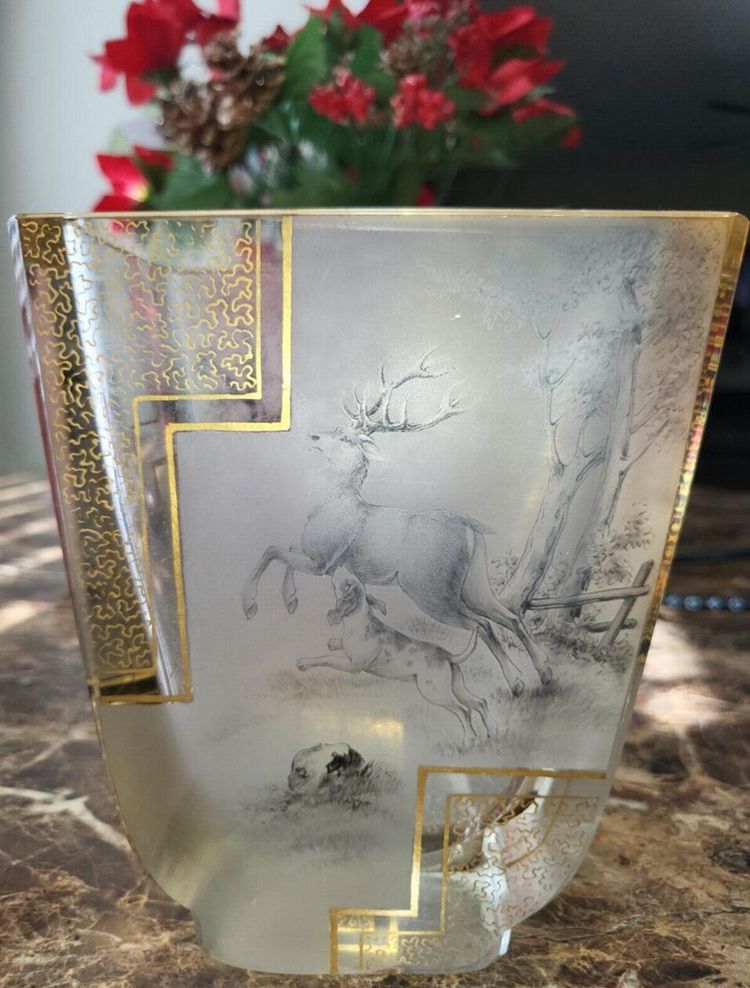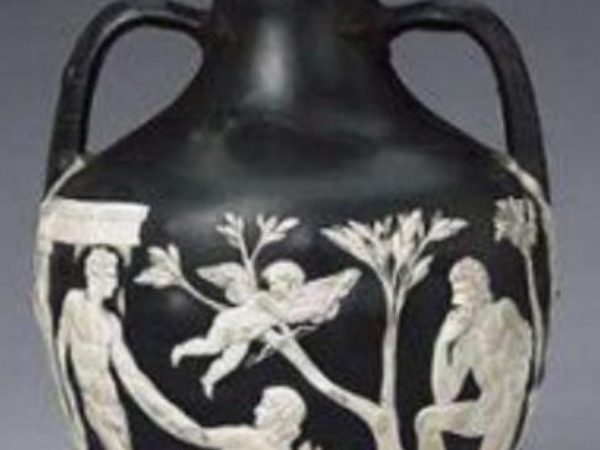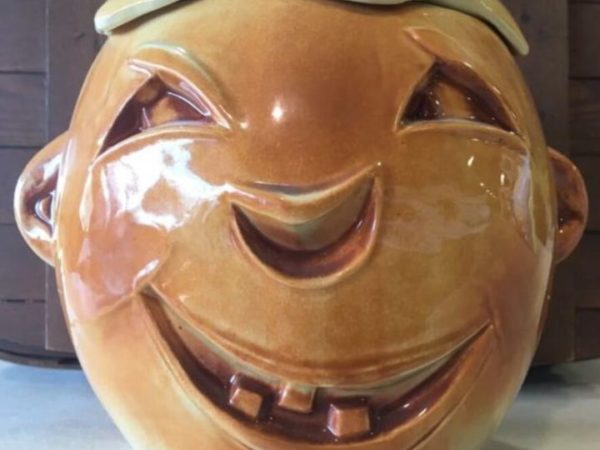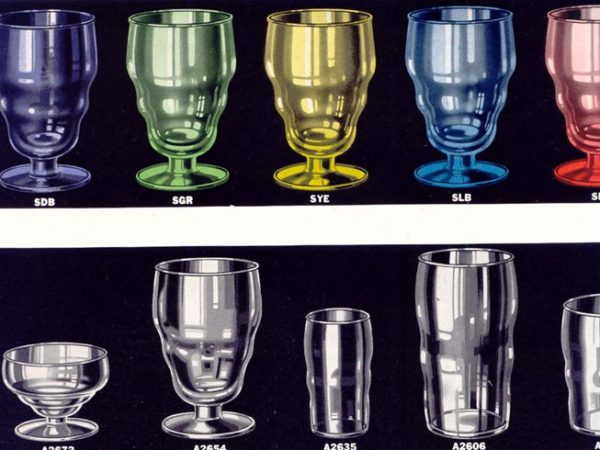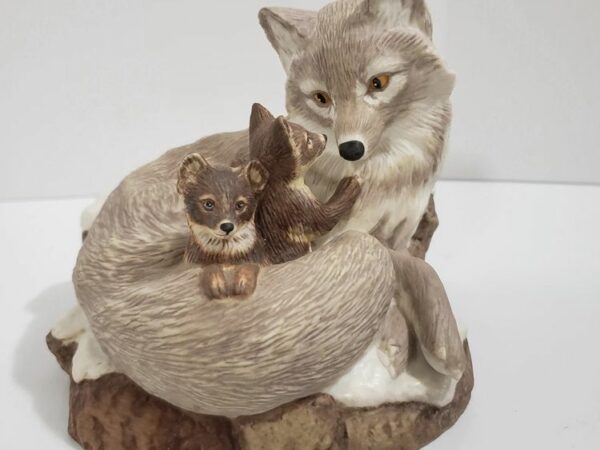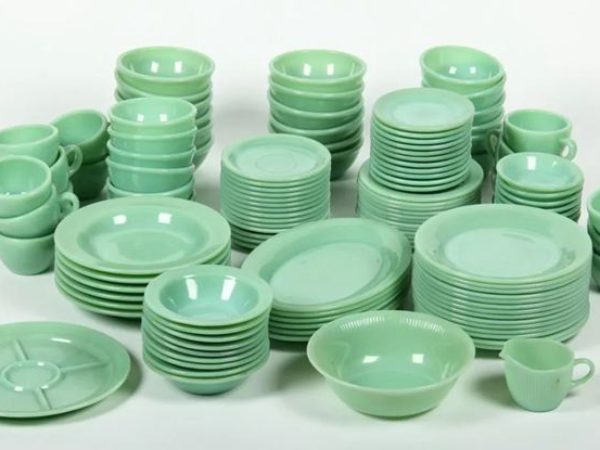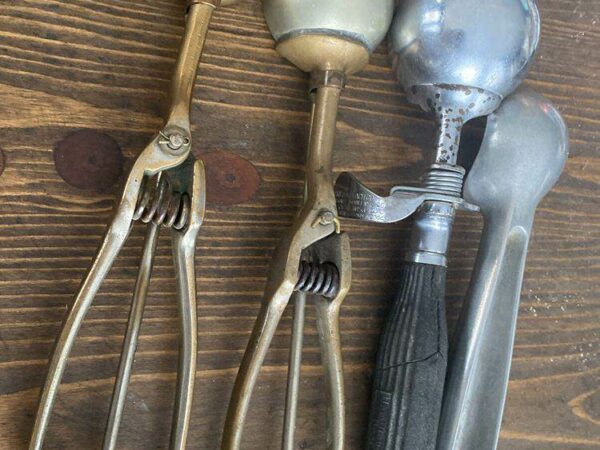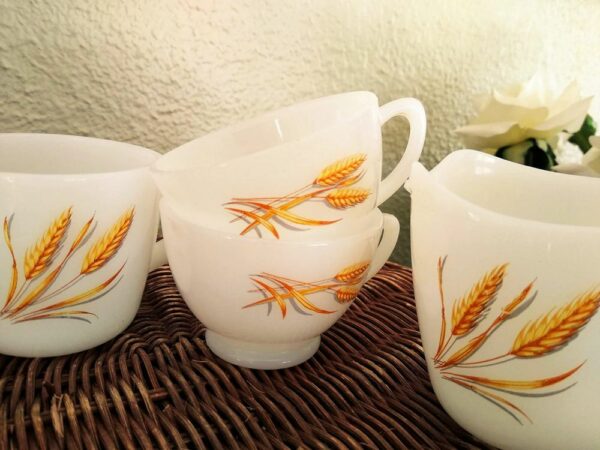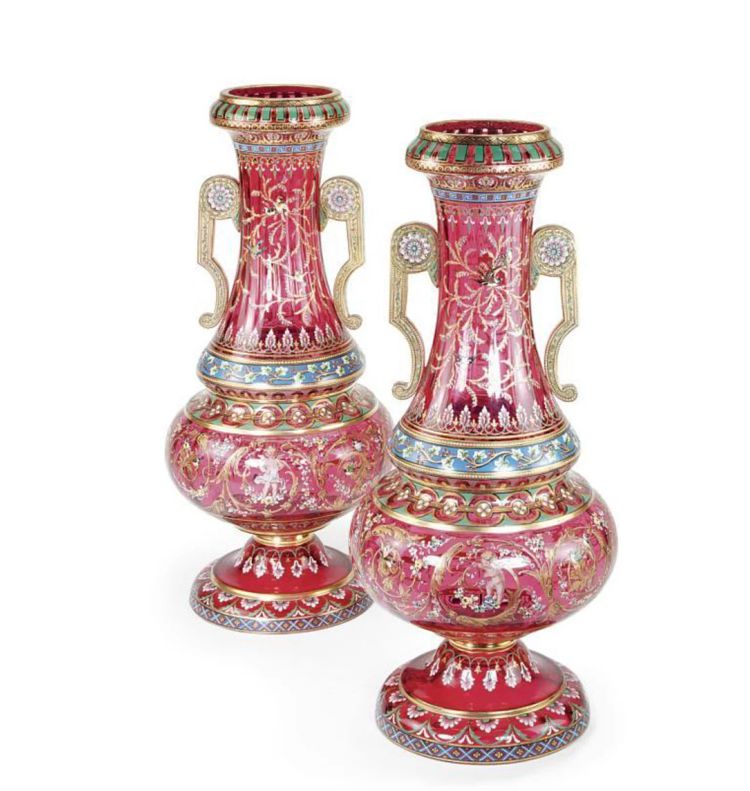
Vintage and antique Moser Glass once served Emperor Franz Joseph of Austria, Sultan Abdul Hamin II of Turkey, and King Edward VII of England. The beauty of everything antique is that a common person can now own something that belonged to royalty in the past life.
A 19th-century twin set Moser verse is listed for $48,777 on 1stDibs, while an Amber Round Bowl sold for $15,000 on eBay.
Why wouldn’t anyone want a piece of that? This guide will teach you how to identify, evaluate and collect a Mosser Glass. Let’s start with a short dive into history.
Table of Contents
Brief History of Moser Glass
In the mid-1800s, Bohemian businessman Ludwig Moser opened a workshop for engraving and polishing glassware. Moser worked with high-end glassware companies, including Loetz and Meyr’s Neffe.
Since Moser catered to royalty, the company’s slogan became King of Glass, Glass of Kings.
The success of his venture led to an expansion into a glass making factory in 1893 (sixty years later) until Moser moved his family to Vienna, Austria. Post-WWI, the family briefly returned to Bohemia which later became Czechoslovakia.
Mosser’s company became a household name in Austria-Hungary by the start of the 20th century, so he and his sons incorporated it into Ludwig Moser & Söhne. The new company catered to the elite exclusively, from monarchs to high-born families.
At his death in 1916, Moser’s company management transferred to Leo Moser, who grew it to become number one in Czechoslovakia. Everyone wanted a piece of the Moser Glass; even the less fortunate citizens saved up to afford one for special occasions.
In the 1920s, Moser Glass began making artistic glassware by employing famous designers like Johann Hoffman to hand-paint its limited edition. Leo Moser also bought Meyr’s Neffe (the company which supplied plain glass to his father) around this period.
Unfortunately, during the second world war, when Germany annexed Czechoslovakia as a prominent family, the Mosers fled, leaving their successful business behind. In 1938, Nazi Germany nationalized Moser Glass, which continued as a foremost brand in the country.
The Mosers left for Dresden in 1936 to avoid the war but lost their business to the Soviet Union in 1945. They eventually landed in America and created a new company here in Richmond, Virginia, which remains the headquarters today.
The company still exists today and upholds its lead-free and eco-friendly production values. However, collectors developed an interest in the pre-WWII art glass pieces and Nazi Germany models for their historical importance and other reasons.
Keep reading to learn how to differentiate modern models from vintage and antique Moser glasses.
How to Identify Moser Glass
Vintage and antique Moser glass have unique identification marks based on their designer, thanks to the predominant hand-painted styles.
Identification by Manufacture Technique
When Moser started its glassware factory, he used hand and mouth-blown techniques to produce glass with bubbles, a.k.a. Cane Lines. The cane lines were, however, minimal due to the standard of perfection Moser set for its product.
Moser glass also has a pontil scar on the point the glassblowers pierce during production. The gold leaf models are set between two glass layers, so they shouldn’t be on the exterior.
Although recent models of Moser glass are made without lead, the earliest models have heavy lead content. Test for the lead when assessing an antique Moser glass; if it’s high, you have an authentic piece in your hands; if not, it’s a recent product.
Identification by Pattern/Painter
Moser glass had different designs and patterns based on the designated artisan. Each one was hand-painted before mass production took over in the mid-1900s. Here are some of the most popular Moser glass patterns.
Diamond Cut
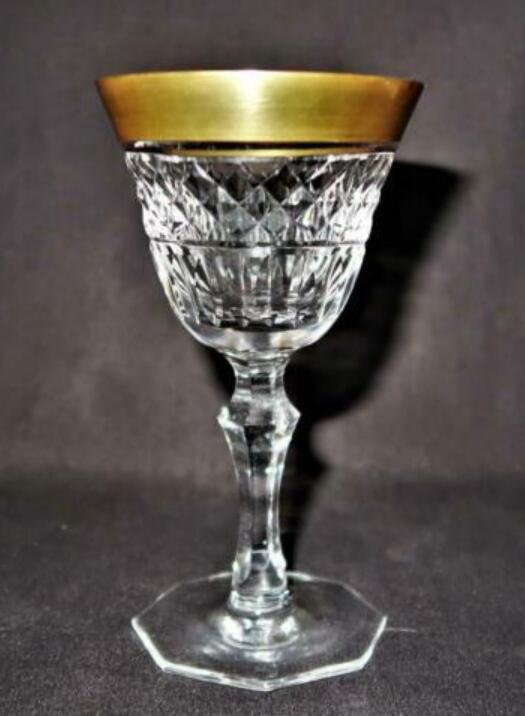
These Moser glass patterns came in different shapes but had three-dimensional designs, making them look like diamonds. You’d typically see this pattern on mirrors and other glass that wasn’t glassware.
Made by Hoffman
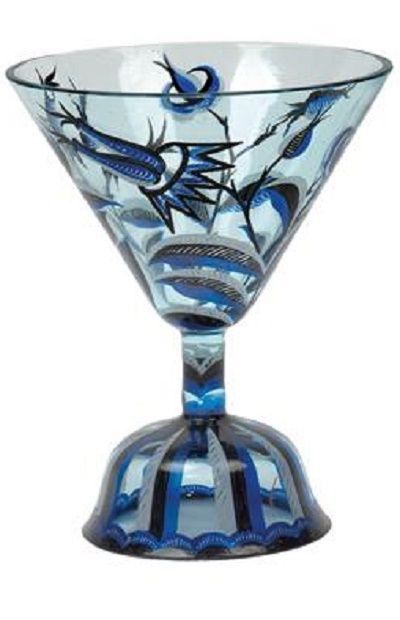
Famous painter Johann Hoffman hand-painted motifs on Amethyst Moser glass in the 1800s. His popular designs were nude women and animals, and sometimes, the glassware was thick black shades.
Shallow Relief
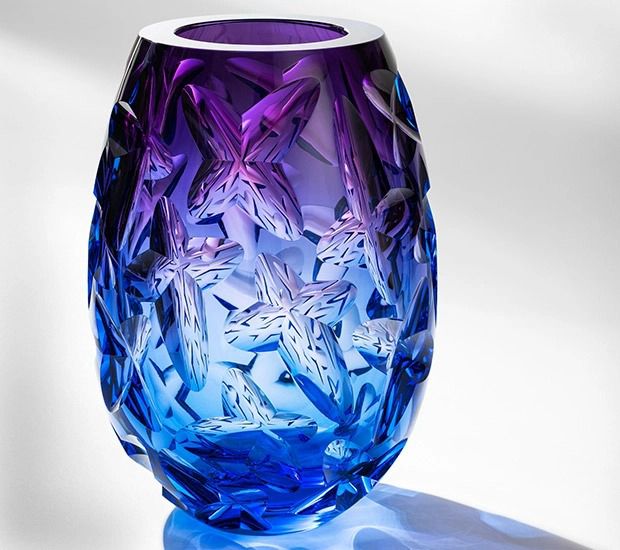
Moser designed its decanters and drinkware with raised shallow relief techniques.
Zwischengoldglas (Gold Leaf)
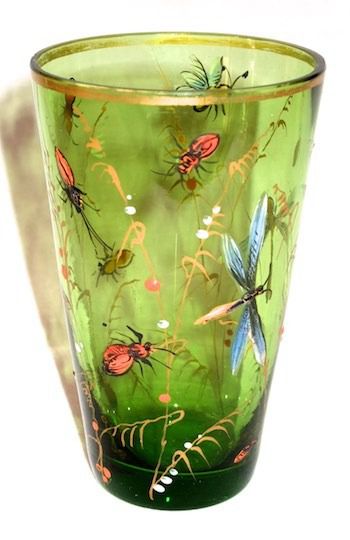
In the late 1800s, ten years before the turn of the century, Moser glass developed a unique gold lead technique. It required merging a gold leaf inside two glass layers before decorating them with motifs.
Identification by Type/Model
There are enough sets and models to identify Moser glass by classification. You can use the shape and paint job to distinguish its purpose and, by extension, the period a set launched in the market. Check them out below.
Beer Stein
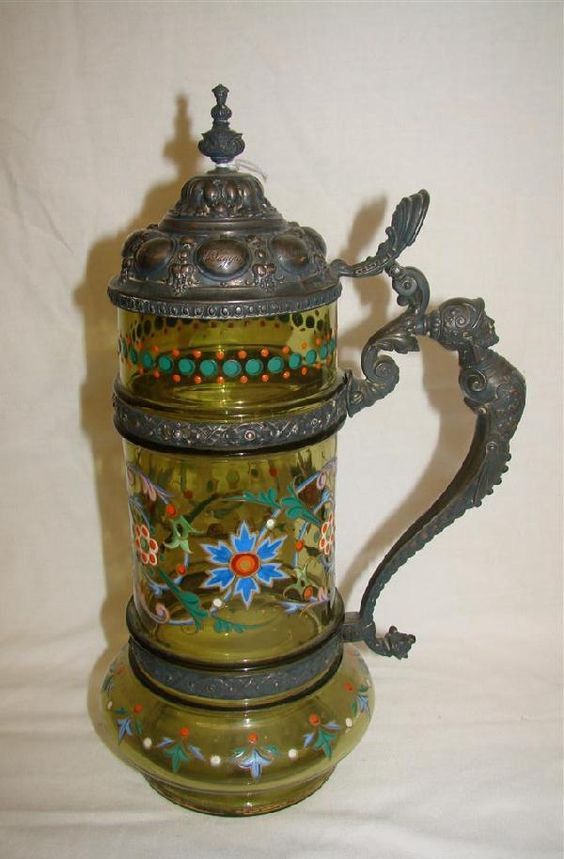
As the name implies, the Beer Stein Moser glass was meant for drinking beer, although some users poured wine in it too. Its glass is transparent, but it has a colorful painting of a traditional Bavarian man about to chug an overflowing beer from a cup.
Champagne Flute
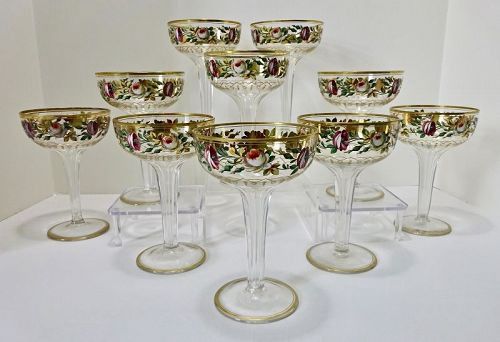
Just like other champagne flutes, this one has a thin stem standing on a ring base with a wide cup. However, its beauty and uniqueness lie in its design. The glass has different paintings depending on the designer and the glass color.
You can use the champagne flute for sparkling wine, cocktails, or (wait for it) champagne.
Cordial Glass
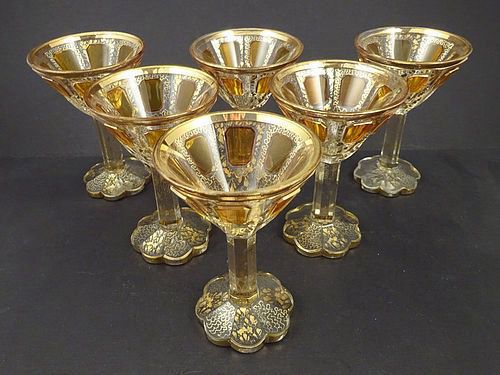
Although the Cordial glass looks like other stemware, such as the champagne flute, they’re not the same. Its stem is thicker, and the cup has more depth than width, whereas the champagne flute is more about the latter.
Decanters
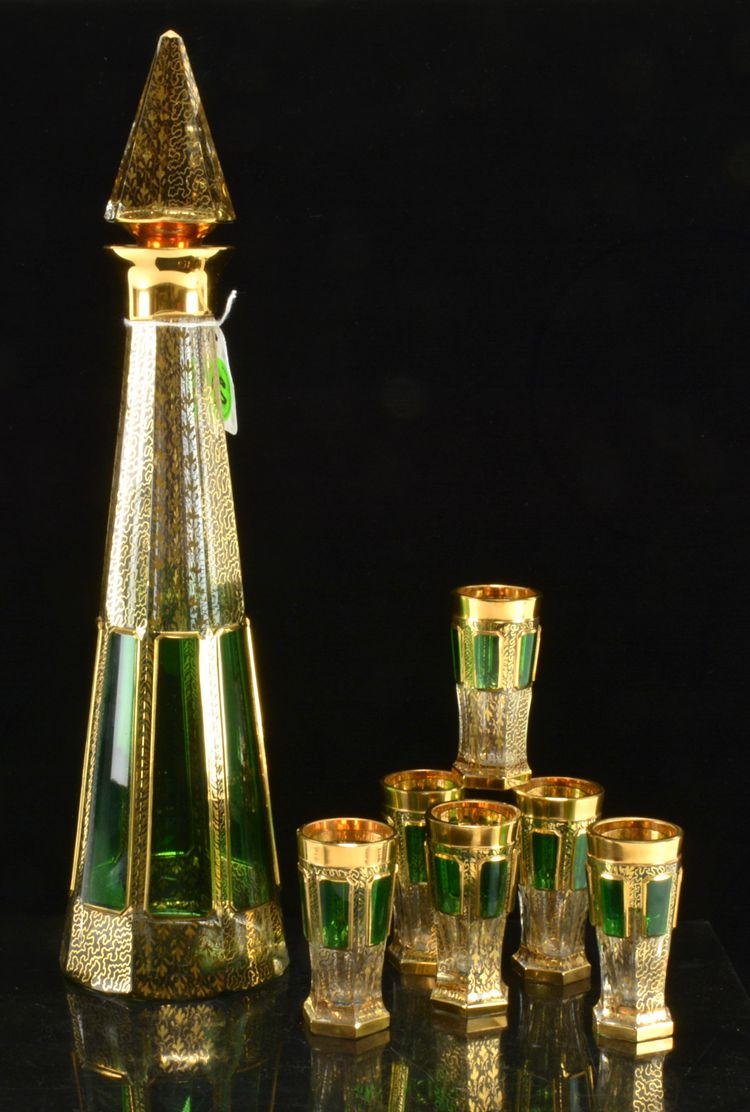
Moser glass made Pitchers, Vessels, Jugs, and other containers for storing large volumes of drinks. They were perfect for festive seasons and entertaining visitors, so consumers often bought them with cups.
Goblet Glass
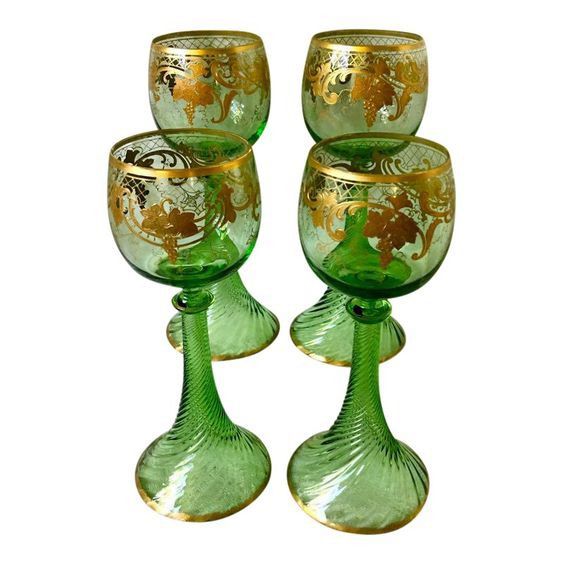
This medieval-inspired model has a short and stout size with a thick stem standing on a wide ring. Its cup has a narrow bottom, unlike the red wine glass, but the top expands wider (although not too wide). It’s great for drinking wine.
Perfume Glass
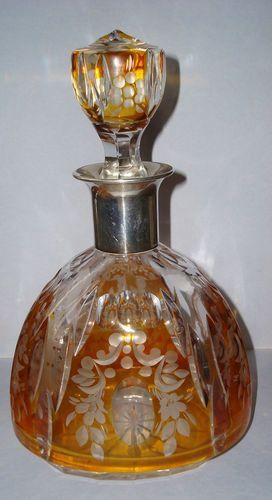
We know you’re thinking it, so we’ll answer you, yes, Moser glass production wasn’t restricted to drinking cups. The perfume bottle is one of the most elusive products by the Austrian company. It came in the 1900s during the Art Nouveau era hence its colorful exterior.
This perfume bottle has a cork stopper, while its interior is silver-lined with holes for diffusing the fragrance. Its cork has a Crown with the Moser name as its identification mark.
Wine Glass (Red)
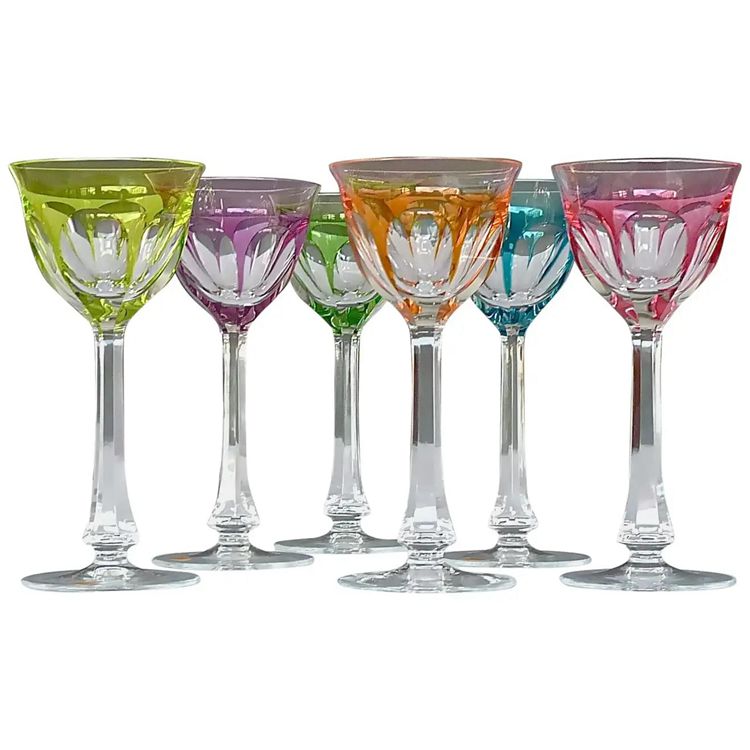
Drinking red wine requires a wide and tall glass to swirl the liquid, and this Moser model fits the bill. It has a thick stem on a wide ring, while the cup has a rounded bottom and narrow top.
Identification by Color
Moser glasses were made in unique colors that can help you distinguish their production model.
Here’s a list of some of them below.
Amethyst
The root of the Amethyst Mosser glass is purple with overtones of blue, clear white, and red, or in some cases.
Blush
Think of blushing pale skin, then the pink that comes to your mind is the right shade. It’s a light pink with a dash of gold, introduced in 1895 before the turn of the century. However, five years into the 20th century, Moser discontinued this color.
Cobalt
A very deep blue that doesn’t fade into black like navy, was the most popular Moser glass shade in 1893. However, it has an undertone of emerald green and a clear accent.
Emerald
It’s hard to miss this striking green shade that Moser introduced to celebrate the new century in 1900. It has undertones of Amber (Yellow) and clear overtones formed in swirls or accents.
The company marketed it as a collection called Carnival Glass, and it’s Moser’s signature shade.
Forest Green
While the Emerald Green on the Carnival Glass is the most popular Moser glassware, another shade’s equally collectible. Moser introduced this shade for different popular models three years into the new century.
It came in swirls and plain opaque paint jobs.
Moser Glass Marks
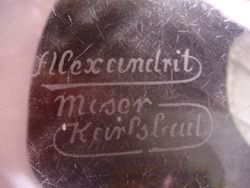
There are several Moser glass marks that you can use to identify the exact period of the glassware’s production. The first mark spelled Moser in a cursive script, then it included the area of production, Karlsbad, written underneath the company’s name.
Antique Moser glass has an “Acid Mark” of an M inside a circle. This script fused the K in Karlsbad into a ring encompassing the word from the upper right corner. If it’s glassware, the mark will be on the bottom of the item.
Next, Moser changed Karlsbad into Karlovy Vary and used the r in its name as the ring, joining the K in Karlovy on the top left. Others include a logo with Karlsbad written with a “C” and Czechoslovakia underneath.
Sometimes, only Moser is written in different scripts, from all caps to cursive. Before Nazi Germany nationalized it, the name was Moser-Austria. Other words included Moser Alexandrite, “Made in Czechoslovakia,” and logos of M and K fused.
You can visit Worthpoint for a comprehensive mark pictorial containing 42 different signs.
How Much is Moser Glass Worth?
There’s no fixed value for all Moser glass items, be they antique or vintage, but there’s a recurring range based on analysis from various sales over the years. Prices may be fixed or open to bidding with caps (meaning a minimum price) when trading on secondary sites or at auctions.
How do you know the value of a Moser glass? Assess all factors surrounding the item’s existence, from its history to its physical condition. Read on for an explanation.
How History Influences the Value
As you’ve read in the history of Moser glass, the brand has experienced serious changes from its inception to its present state. Antique pieces were made 100 years ago, from 1818, when Ludwig Moser started painting on other brands’ glasses, to 1920, when Leo Moser took over.
During this period, Moser Glass experienced two world wars causing the factory to move around. The oldest of these models is the Bohemian pieces made before Bohemia became Czechoslovakia during the first World War (1914 -1919).
As the oldest, it’s rare to find a Moser glass made in Bohemia Pre-World War I, making it the most valuable type. Next, are the Czechoslovakia pieces made from 1919 to 1938 before the country became annexed by German-Austria.
Pieces from that era are also valuable because many of them got lost during the sack of the Nazis and the induction of the Soviet Union. USSR (Soviet Union) Moser Glass isn’t as valuable as its predecessors because many of them are still accessible.
Is it a Rare Model?
Now that you understand the importance of history when evaluating a Moser glass, it’s important to realize that it’s not the only factor driving rarity. Some models made were limited-editions like the Forest green Moser glass.
Sets that weren’t made in large quantities in the first place have even lesser numbers available for sale today. You may find such a model in new condition, but it’s often sold as hand-me-downs from people who bought them years ago.
Good Condition Moser Glass Always Sells High
Glass is best in excellent condition, be it a mirror or glassware. If there’s any damage, from slight cracks to severe chips and breaks, it’ll depreciate.
Valuable Moser Glass
Here’s a short list of Moser glass vases recently sold for five figures in dollars and pounds.
Name |
Year |
Price |
Gilt Vase |
1885 |
30,000 – 40,000 GBP |
Rosaline Gilt |
1890 |
15,000 – 20,000 USD |
Round Vase Bowl |
1882 |
15,000 USD |
Gilt Vases
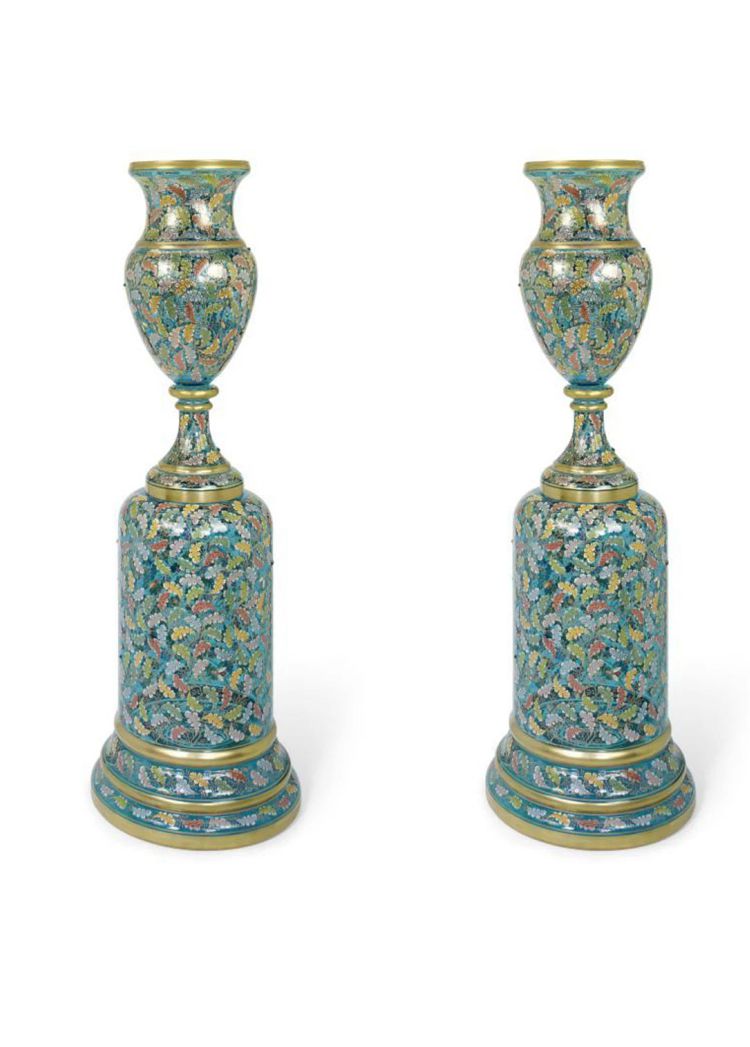
Price: 30,000 – 40,000 GBP
Year: 1885
This enameled gilt vase with pedestals is labeled Karlsbad, painted in blue tint with a unique form. Its neck is waist with an everted rim, with gilded oak leaf sprigs and applied acorns painted over its blue hue.
Rosaline Gilt
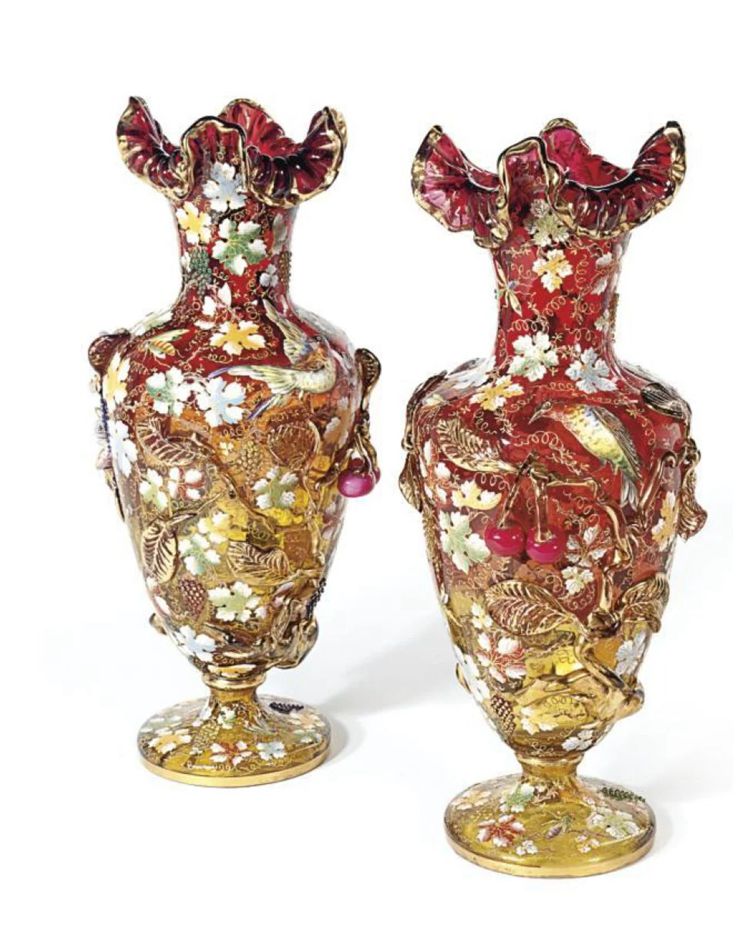
Price: 15,000 – 20,000 GBP
Year: c. 1890
A twin-vase set in an ombre shade of red and gold designed with an imperial eagle. This model is called the Rosaline, and the circular paper label on the vase reads Ludwig Moser Carlsbad.
Round Vase Bowl
Price: $15,000
Year: 1882
Last July, an American sold an amber brown Moser Bohemian vase for five figures. It has a gold trim reindeer marsh and is an art glass model. Although it has cosmetic wear and tear, being a Czechoslovakian-made piece upped its collectible value.
How to Sell/Buy Moser Glass
Knowing the right market to offer Moser glass is key for sellers, and that’s in Europe. Since it originated in a European country, there’s a keen interest and recognition by people in that region for the Moser glass.
That doesn’t mean Moser glass doesn’t sell in America or other regions. Still, the percentage is lower compared to European traders, and American buyers resell to Europeans more often than not.
You can reach your target market via the internet using secondary online sites like eBay, 1stDibs, Amazon, and Etsy. If you appraise your Moser glass and discover it’s a valuable piece, it’s best to sell it via verified auction houses or art galleries like Christie’s and Sotheby’s.
If you’re lucky, you may get a site that offers insurance on all items like eBay, but it’s not guaranteed. If you want a guarantee, it’s best to sell via a gallery or auction house, and that’s only worth it if the item’s value is great.
Likewise, if you want to buy an authentic high-value Moser glass piece, you’ll find it in an auction house, art gallery, or museum (if they’re selling).
You might get lucky and find an expensive piece at a garage or estate sale, especially if the offeror didn’t appraise the item before displaying it for sale.
FAQs
Q: Is Moser the same as Mosser?
No. Moser glass is a Czech company while Mosser Glass Co. of Ohio is an American company. You can distinguish them with their marks apart from the obvious spelling difference. The American company uses a Highbee bee mark underneath its brand name while the Czech company has its production town written underneath its mark. See the section above for an explanation.
Q: Is Moser Crystal or Glass?
Moser is made of glass by the glass-making Bohemian company Ludwig Moser & Sons. Its products range from decor to stemware and other glass art like decorated clocks.
Q: Why is Czech Glass Special?
According to the Prague website, Czech glass has a high-quality that makes it strong enough to withstand manipulation during production. From cutting to engraving, and applying whichever technique you desire, the glass wouldn’t damage.
It also stays durable long after formation.
Final Words
Moser glass is a good investment, especially if you buy a vintage or antique model. Whether collecting it for use or decoration, you’d often get your money’s worth. However, that’s only if you follow the steps in this guide and avoid buying reproductions or fakes.
- Ensure the identity by inspecting the design, type, and color.
- Confirm the technique used to make it by doing a lead test.
- Make sure it fits all the conditions worthy of a valuable Moser glass.
Once you check these three things, you’re ready to own a Moser glass.
